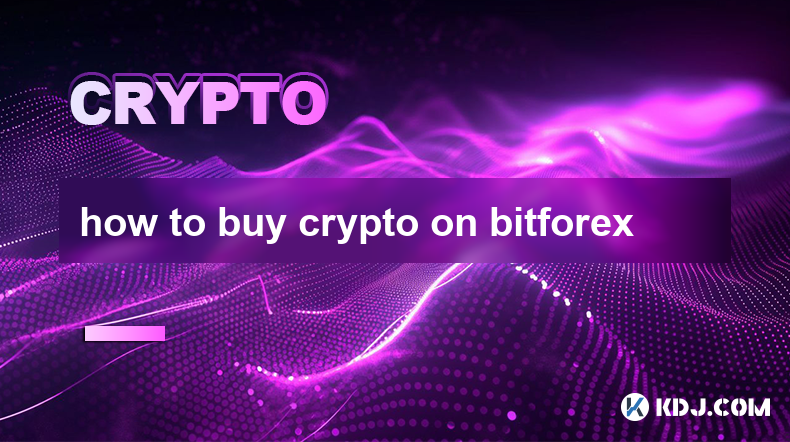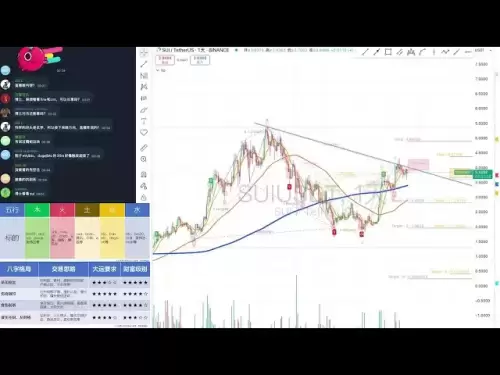-
 Bitcoin
Bitcoin $106,538.1009
0.08% -
 Ethereum
Ethereum $2,535.1249
-0.25% -
 Tether USDt
Tether USDt $1.0003
0.03% -
 XRP
XRP $2.3482
-2.11% -
 BNB
BNB $649.6409
-0.31% -
 Solana
Solana $168.5075
-0.95% -
 USDC
USDC $0.9998
0.02% -
 Dogecoin
Dogecoin $0.2263
-0.83% -
 Cardano
Cardano $0.7426
-0.86% -
 TRON
TRON $0.2701
1.22% -
 Sui
Sui $3.8413
-1.64% -
 Chainlink
Chainlink $15.6460
-2.87% -
 Avalanche
Avalanche $22.3799
-0.59% -
 Stellar
Stellar $0.2862
-0.59% -
 Hyperliquid
Hyperliquid $26.2721
-2.36% -
 Shiba Inu
Shiba Inu $0.0...01452
-1.48% -
 Hedera
Hedera $0.1936
-1.51% -
 UNUS SED LEO
UNUS SED LEO $8.8111
1.19% -
 Bitcoin Cash
Bitcoin Cash $392.7120
-1.10% -
 Toncoin
Toncoin $3.0564
0.38% -
 Polkadot
Polkadot $4.6613
0.21% -
 Litecoin
Litecoin $94.4448
-4.82% -
 Monero
Monero $354.6985
2.86% -
 Bitget Token
Bitget Token $5.1667
-1.41% -
 Pepe
Pepe $0.0...01315
-2.05% -
 Pi
Pi $0.7695
3.79% -
 Dai
Dai $0.9998
0.01% -
 Ethena USDe
Ethena USDe $1.0006
0.01% -
 Aave
Aave $258.8612
-0.27% -
 Uniswap
Uniswap $6.0339
0.17%
how to buy crypto on bitforex
To buy cryptocurrency on BitForex, users can follow the simple steps of creating an account, optionally verifying their identity, funding their account, finding the desired cryptocurrency, placing a buy order, monitoring progress, and subsequently withdrawing their assets.
Feb 01, 2025 at 12:43 pm

Key Points:
- Creating a BitForex account
- Verifying your identity (optional)
- Funding your account
- Finding the crypto you want to buy
- Placing a buy order
- Monitoring and managing your order
- Withdrawing your crypto
Creating a BitForex Account:
- Visit the BitForex website and click on "Sign Up."
- Enter your email address or phone number, create a password, and agree to the terms of service.
- You will receive a confirmation email or SMS. Click the link in the email or enter the code from the SMS to complete your registration.
Verifying Your Identity (Optional):
- Go to your account settings and select "Identity Verification."
- Follow the instructions to provide your personal information, including your name, date of birth, and address.
- Upload a copy of your government-issued ID and a recent selfie.
- Once your identity is verified, you will have increased withdrawal limits and access to certain premium features.
Funding Your Account:
- Go to the "Deposit" page in your account.
- Select the cryptocurrency you want to deposit and generate a deposit address.
- Send the cryptocurrency from your external wallet to the generated address.
- Once the deposit is confirmed, the funds will be added to your BitForex balance.
Finding the Crypto You Want to Buy:
- Go to the "Markets" page on the BitForex website.
- Use the search bar to find the cryptocurrency you are interested in.
- Click on the cryptocurrency name to open its trading page.
Placing a Buy Order:
- On the trading page, select the "Buy" tab.
- Enter the amount of cryptocurrency you want to buy.
- Choose the order type: "Limit Order" for a specified price or "Market Order" for the current market price.
- Click on the "Buy" button to place your order.
Monitoring and Managing Your Order:
- Go to the "My Orders" page in your account.
- Here you can view all your active orders, track their status, and cancel them if necessary.
- You can also use the "Order History" to see all your past orders.
Withdrawing Your Crypto:
- Go to the "Withdraw" page in your account.
- Select the cryptocurrency you want to withdraw.
- Enter the withdrawal address, which is typically the address of your external wallet.
- Enter the amount you want to withdraw and the withdrawal fee.
- Click on the "Withdraw" button to initiate the withdrawal.
FAQs:
What are the fees for buying crypto on BitForex?
- BitForex charges a trading fee of 0.2% for both makers and takers.
- Withdrawals incur a small network fee, which varies depending on the cryptocurrency.
What payment methods are accepted by BitForex?
- BitForex accepts deposits in a wide range of cryptocurrencies, including Bitcoin, Ethereum, USDT, and XRP.
How long does it take to withdraw crypto from BitForex?
- Withdrawals are typically processed within 24 hours, but it can take longer during periods of high traffic.
Is BitForex a safe platform to buy crypto?
- BitForex implements various security measures, including two-factor authentication, SSL encryption, and cold storage for a majority of its user funds.
Can I buy crypto on BitForex without verifying my identity?
- Yes, you can buy crypto on BitForex without verifying your identity. However, your withdrawal limits will be lower, and you will not be able to access certain premium features.
Disclaimer:info@kdj.com
The information provided is not trading advice. kdj.com does not assume any responsibility for any investments made based on the information provided in this article. Cryptocurrencies are highly volatile and it is highly recommended that you invest with caution after thorough research!
If you believe that the content used on this website infringes your copyright, please contact us immediately (info@kdj.com) and we will delete it promptly.
- Robinhood Has Submitted a Detailed Proposal to the U.S. SEC
- 2025-05-21 10:01:50
- Bancor sues Uniswap for patent infringement, alleging the decentralized exchange has used its technology without permission
- 2025-05-21 10:01:50
- A new fundraising model gaining traction on the Solana blockchain has generated over $2.8 billion in trading volume
- 2025-05-21 09:55:13
- XRP Futures Traded for the First Time on CME Group's US Derivatives Exchange
- 2025-05-21 09:55:13
- Bitcoin futures open interest hits record $720M, signaling rising use of leverage among institutional investors.
- 2025-05-21 09:50:13
- Troller Cat ($TCAT) Presale Promises 4000% ROI as Ethereum (ETH) Price Surges 7%
- 2025-05-21 09:50:13
Related knowledge

What is Ethereum’s Slashing mechanism and how to punish malicious behavior?
Feb 20,2025 at 03:08am
Key PointsOverview of slashingDifferent types of slashing in EthereumIncentives and consequences of slashingIdentifying and reporting slashed validatorsOngoing discussions and potential improvementsEthereum's Slashing Mechanism: Punishing Malicious BehaviorEthereum's slashing mechanism is an essential tool for ensuring network security and punishing mal...

What is the verifier node of Ethereum and how to become a verifier?
Feb 19,2025 at 06:00pm
The Verifier Node of Ethereum: A Comprehensive GuideKey Points:What is a Verifier Node?How to Become a Verifier NodeResponsibilities and Rewards of a Verifier NodeMinimum Requirements for Becoming a Verifier NodePotential Difficulties in Running a Verifier Node1. What is a Verifier Node?A Verifier Node is an independent entity on the Ethereum network th...

What is Ethereum’s staking, and how to participate and earn money?
Feb 19,2025 at 04:37pm
Key Points:Understanding Ethereum's Staking MechanismSteps to Participate in StakingBenefits and Rewards of StakingSecurity and Risk ConsiderationsTechnical Requirements and Hardware OptionsPotential Challenges and Troubleshooting TipsFAQs on Ethereum StakingWhat is Ethereum's Staking?Proof-of-Stake (PoS) is a consensus mechanism used in blockchain netw...

What is Ethereum’s DAO (Decentralized Autonomous Organization) and how does it work?
Feb 20,2025 at 03:12am
Key PointsDefinition and Structure of a DAOGovernance and Decision-Making in DAOsBenefits and Use Cases of DAOsChallenges and Limitations of DAOsWhat is Ethereum's DAO (Decentralized Autonomous Organization) and How Does It Work?Definition and Structure of a DAOA Decentralized Autonomous Organization (DAO) is an innovative governance and management fram...

What is Ethereum's multi-signature wallet and how to improve security?
Feb 20,2025 at 02:18pm
Key Points:Understanding the Concept of a Multi-Signature WalletBenefits and Drawbacks of Multisig WalletsRequirements for Setting Up a Multisig WalletStep-by-Step Guide to Generating a Multisig WalletImplementing Strategies for Enhanced Security1. Understanding the Concept of a Multi-Signature WalletA multi-signature (multisig) wallet in the Ethereum e...

What is Ethereum's oracle and how to provide data for smart contracts?
Feb 21,2025 at 01:30am
Key Points:Understanding the concept of oracles in EthereumExploring different types of oraclesDetailed guide on how to provide data for smart contractsAddressing potential challenges and considerationsWhat is Ethereum's Oracle?Oracles are crucial components in the Ethereum ecosystem, enabling smart contracts to access real-world data and off-chain even...

What is Ethereum’s Slashing mechanism and how to punish malicious behavior?
Feb 20,2025 at 03:08am
Key PointsOverview of slashingDifferent types of slashing in EthereumIncentives and consequences of slashingIdentifying and reporting slashed validatorsOngoing discussions and potential improvementsEthereum's Slashing Mechanism: Punishing Malicious BehaviorEthereum's slashing mechanism is an essential tool for ensuring network security and punishing mal...

What is the verifier node of Ethereum and how to become a verifier?
Feb 19,2025 at 06:00pm
The Verifier Node of Ethereum: A Comprehensive GuideKey Points:What is a Verifier Node?How to Become a Verifier NodeResponsibilities and Rewards of a Verifier NodeMinimum Requirements for Becoming a Verifier NodePotential Difficulties in Running a Verifier Node1. What is a Verifier Node?A Verifier Node is an independent entity on the Ethereum network th...

What is Ethereum’s staking, and how to participate and earn money?
Feb 19,2025 at 04:37pm
Key Points:Understanding Ethereum's Staking MechanismSteps to Participate in StakingBenefits and Rewards of StakingSecurity and Risk ConsiderationsTechnical Requirements and Hardware OptionsPotential Challenges and Troubleshooting TipsFAQs on Ethereum StakingWhat is Ethereum's Staking?Proof-of-Stake (PoS) is a consensus mechanism used in blockchain netw...

What is Ethereum’s DAO (Decentralized Autonomous Organization) and how does it work?
Feb 20,2025 at 03:12am
Key PointsDefinition and Structure of a DAOGovernance and Decision-Making in DAOsBenefits and Use Cases of DAOsChallenges and Limitations of DAOsWhat is Ethereum's DAO (Decentralized Autonomous Organization) and How Does It Work?Definition and Structure of a DAOA Decentralized Autonomous Organization (DAO) is an innovative governance and management fram...

What is Ethereum's multi-signature wallet and how to improve security?
Feb 20,2025 at 02:18pm
Key Points:Understanding the Concept of a Multi-Signature WalletBenefits and Drawbacks of Multisig WalletsRequirements for Setting Up a Multisig WalletStep-by-Step Guide to Generating a Multisig WalletImplementing Strategies for Enhanced Security1. Understanding the Concept of a Multi-Signature WalletA multi-signature (multisig) wallet in the Ethereum e...

What is Ethereum's oracle and how to provide data for smart contracts?
Feb 21,2025 at 01:30am
Key Points:Understanding the concept of oracles in EthereumExploring different types of oraclesDetailed guide on how to provide data for smart contractsAddressing potential challenges and considerationsWhat is Ethereum's Oracle?Oracles are crucial components in the Ethereum ecosystem, enabling smart contracts to access real-world data and off-chain even...
See all articles
























































































